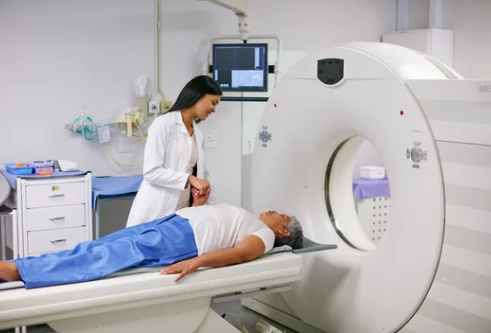Magnetic Resonance Imaging (MRI) is a powerful tool for capturing detailed images of the body’s internal structures. When combined with fusion imaging, which merges data from different scans like PET or CT, the result is a more complete picture that blends structural details with functional information. This fusion of MRI with other imaging methods improves diagnosis and treatment by providing clearer and more precise images.
The ability to integrate multiple imaging techniques into a single view helps doctors see abnormalities that may be missed using just one method. This magnetic synergy brings together strengths from each technology, enhancing the accuracy and usefulness of medical images. It is changing how diseases are detected and treated, especially in complex cases involving brain or cancer imaging.
As technology advances, combining MRI with other scans will become even more common. This fusion approach faces challenges, such as how to best blend the images without losing important details. However, its potential to improve patient care continues to grow, marking an important step toward smarter and more effective medical imaging into the future.
Key Takeaways
- Fusion with MRI creates clearer, more detailed medical images.
- Combining scans enhances diagnostic accuracy and treatment planning.
- Integration challenges exist but advancements are driving future improvements.
Understanding the Magnetic Synergy of Fusion and MRI
Magnetic resonance imaging relies on powerful magnetic fields and radio waves to create detailed images of the body’s internal structures. Fusion technology applies principles from energy generation and particle physics, offering potential improvements in imaging and diagnostics. Combining aspects of both can lead to enhanced image quality and new ways to observe biological and physical processes.
Principles of MRI Technology
MRI works by aligning hydrogen atoms in the body using a strong magnetic field. When radiofrequency pulses are applied, these atoms emit signals as they return to their normal state. These signals are captured and converted into detailed images showing soft tissue contrast with high precision.
The technique is non-invasive and does not use ionizing radiation. MRI machines often use magnets with strengths measured in teslas, with clinical systems usually between 1.5 and 3T. Advanced MRI can also measure functional and metabolic changes in tissue, expanding its diagnostic power beyond simple anatomy.
Fusion Energy: Fundamentals and Advances
Fusion energy is generated by combining light atomic nuclei, releasing energy in a process similar to the sun’s core. It requires extremely high temperatures and magnetic confinement to hold plasma in place. Magnetic fields in fusion reactors reach very high strengths and must control particles precisely to sustain the reaction.
Recent fusion advances focus on better magnetic confinement techniques and materials that withstand intense heat. Progress in this field includes improved magnet designs and computational models. These developments provide insights into managing complex magnetic interactions, which can also inform MRI technology.
Integrating Fusion Science with MRI Innovations
The combination of fusion and MRI involves using magnetic concepts from fusion research to enhance MRI systems. Fusion magnets can influence MRI design by informing better field stability and strength. This can improve image clarity and reduce artifacts that often challenge MRI scans.
Additionally, fusion research contributes to multimodal imaging techniques. Integrating different imaging methods, such as MRI with positron emission or computed tomography, can offer richer diagnostic information. Understanding fusion magnetics helps refine MRI hardware and software, creating possibilities for faster scans and enhanced functional imaging.
Future Applications and Challenges in Fusion-MRI Integration
Fusion-MRI integration combines data from multiple imaging techniques to enhance diagnostic precision. This approach faces challenges but opens new opportunities in diagnostics, technology improvements, healthcare impact, and research.
Emerging Medical Diagnostics
Fusion-MRI improves the ability to detect and understand complex diseases. By combining MRI with PET, CT, or ultrasound, doctors gain both structural and functional insights. This can lead to earlier detection of cancers, neurological disorders, and cardiovascular diseases.
It enhances precision in identifying tumor boundaries and brain activity, enabling better treatment plans. Fusion allows simultaneous viewing of anatomy and metabolism, offering a more complete clinical picture than single-modality scans.
Advanced AI tools help analyze fused images faster, improving diagnosis speed and reducing errors. This technology supports personalized medicine by tailoring treatments based on detailed, combined imaging data.
Technological Barriers and Solutions
The main challenges include differences in image resolution, alignment, and timing between modalities. MRI and PET, for example, may produce images with different scales or distortions that complicate fusion.
Data processing requires high computing power and sophisticated algorithms to correctly merge images. Noise and artifacts from one modality can affect the overall fused result, requiring advanced filtering techniques.
Solutions involve improved AI-driven fusion algorithms, deep learning models, and hardware advances like co-located scanners. Standardizing imaging protocols and improving software compatibility also help overcome these barriers.
Potential Impact on Healthcare and Energy
Fusion-MRI integration can streamline clinical workflows, reducing the need for multiple separate scans. This leads to faster diagnoses and better patient comfort due to fewer visits.
It supports precision medicine by providing comprehensive images that guide targeted therapies. In oncology, it improves treatment monitoring and assessment of therapy effectiveness.
Energy consumption in imaging centers may rise due to complex processing needs. However, fused imaging can reduce resource use by minimizing redundant scans, potentially balancing costs and environmental impact.
Research Directions and Collaborative Opportunities
Ongoing research focuses on refining fusion algorithms and exploring new combinations of imaging modalities. Multidisciplinary teams including radiologists, computer scientists, and engineers drive innovation.
Collaboration between academic, clinical, and industry partners accelerates the development of practical fusion-MRI tools. Open datasets and shared frameworks improve algorithm training and validation.
Future work aims to integrate generative AI and real-time fusion, broadening clinical applications. Research also explores fusion’s role in emerging fields like mental health and functional imaging.
Also Read :
